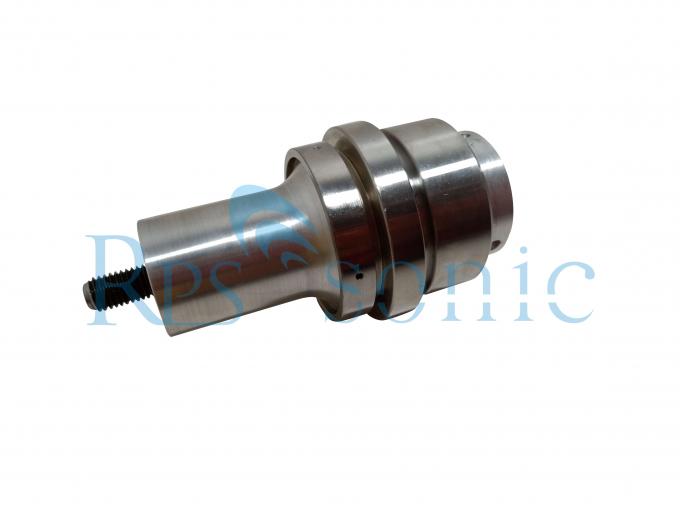Titanium alloy solid mount ultrasonic welding booster Rinco replaced
Products Details
| type | Rinco |
| frequency | 20KHz |
| Model | Depending on your requirements |
| power supply | AC220v |
| Maiterial | Titaniu, alloy |
What's ultrasonic booster?
There are three types of ultrasonic boosters with different mounting systems:1) standard mount; 2) rigid mount with square O-rings and removable clamp rings (which also is repairable); and 3) solid mount that provide improved rigidity. For continuous applications, solid mount ultrasonic boosters deliver more energy to the product, while in plunge applications, improved alignment is possible. For more information on solid mount boost.
According to the type of vibration, it can be divided into longitudinal vibration, torsional vibration, bending vibration and composite vibration (longitudinal bending, longitudinal torsion, bending torsion). In the processing and processing applications of power ultrasound, longitudinal vibration applications are most common.It is classified from the shape of the bus of a single booster, and it can be divided into ladder, index, catenary, cone, Gauss, Fourier, cosine and other types. Compound horn.According to its function, it can be divided into two types of half-wavelength and quarter-wavelength. Although there are many classifications, the design of longitudinal, torsional, and flexural booster starts from their corresponding vibration equations, and the design process and steps are the same.
On the ultrasonic transducer/ ultrasonic booster / ultrasonic hornshould use o-ring ultrasonic boosters, as they absorb some of the side loads which would otherwise lead to premature failure of the ultrasonic horn in the stud area.
Stud Sizes:
Aluminum 15 – 20 – 25 kHz ultrasonic boosters with ratios of 1:0.6, 1:1, 1:1.5, and 1:2 are available with the ultrasonic horn end drilled and tapped either 1/2-20 or 3/8- 24. Titanium 15khz, 20khz 25 kHz boosters in all ratios, including 1:2.5, are available with 1/2-20 or 3/8-24 tap. ultrasonic Boosters for 28Khz 30khz35khz, 36khz 40 kHz are available with the ultrasonic horn end drilled and tapped for M-8 threads.
Ultrasonic Boosters are available with ratios of 1:0.5, 1:1, 1:1.5, 1:2, 1:2.5 and 1:3.0
The material of ultrasonic welding booster:
As an important part of ultrasonic welding system, ultrasonic boosterare mainly used for energy transfer and amplification in ultrasonic welding. The energy transmitted to the welding surface and the strength of the weld obtained by welding have a direct impact. The efficiency of the horn's energy transfer depends not only on the design of the booster, but also on its material. Aiming at the ultrasonic boosters of different materials, such as aluminum alloy, low carbon steel, stainless steel and titanium alloy, the relationship between the material of the booster and the ultrasonic welding strength was analyzed by using a single factor analysis method. The experimental results show that the strength of the weld obtained by the titanium alloy booster is the highest, followed by low carbon steel, aluminum alloy and stainless steel.
How to design the half-wavelength ultrasonic booster:1. Traditional analytical method2. Equivalent circuit method3. Alternative method (mechanical impedance equalization method)4. Transfer Matrix Method5. finite element method(FEA)6. Other methods: Luffing rod design methods include transmission line method, piecewise approach method, apparent elasticity method, etc.
